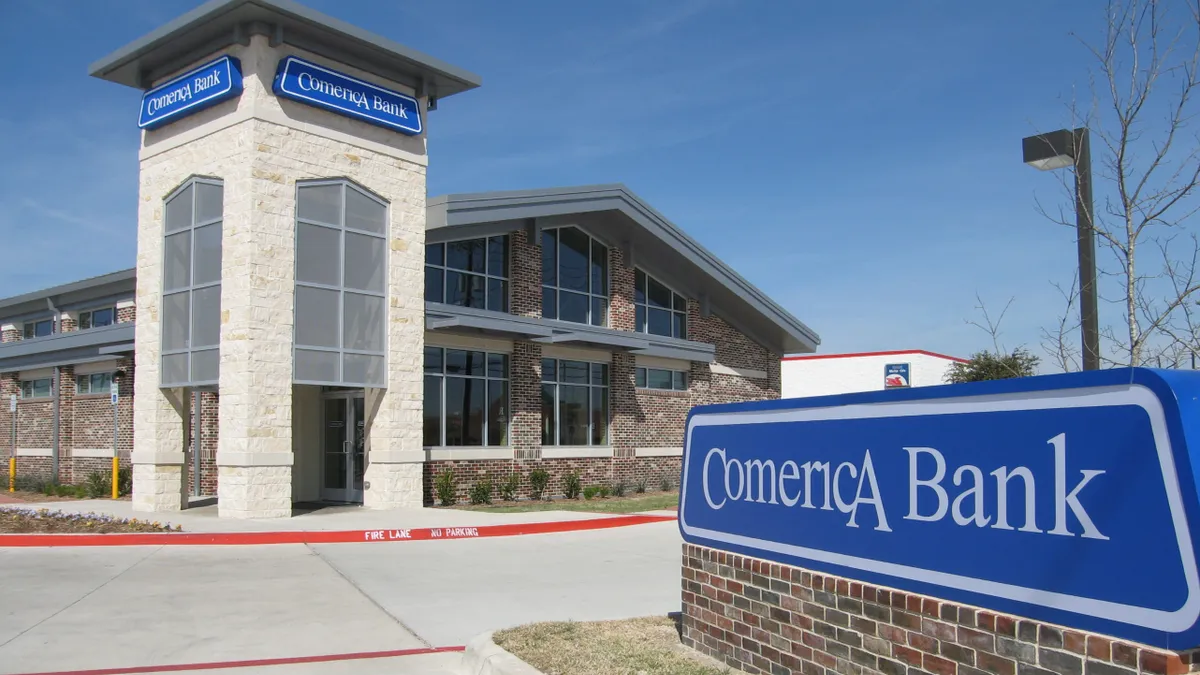Dallas-based Comerica eliminated roughly 250 positions and closed 26 branches in the fourth quarter, CFO Jim Herzog told analysts last week.
“To enhance colleague efficiency and key decision makers close to our customers, we are streamlining our management structure and eliminating select roles,” Herzog said on an earnings call Friday. The remainder of the cuts are connected to branch closures, he said.
The layoffs cost Comerica $25 million in severance charges, which Herzog said were “intended to enhance future earnings power and create capacity for investment.”
Dubbing the eliminations “expense re-calibration efforts,” Herzog said the bank is now better positioned to enhance its funding base, revenue mix, capital efficiency and risk management framework.
A bank spokesperson told The Dallas Morning News that 28 of the 250 layoffs were based in the Dallas area and were primarily non-customer-facing.
While the spokesperson didn’t provide details as to where branch closures occurred, none were in the bank’s home market of Dallas-Forth Worth, they said.
“We will continue to manage expenses closely, which will ultimately create capacity for investments that will benefit our customers,” the spokesperson said.
Comerica did not respond to Banking Dive’s request for comment.
In all, Comerica aims to reduce expenses this year by $45 million, which the bank expects will grow to $55 million in savings in 2025.
Part of that savings will come from optimizing its product offerings, Herzog said, to enhance capital efficiency and returns; and from reviewing and renegotiating select contracts.
“The whole industry has gone through an inflection in 2023 and somewhat of a re-calibration,” CEO Curt Farmer said. “We've tried to be thoughtful in terms of balancing the things that we believe are driving revenue for us and will drive revenue for us going forward.”
Investments that have fit the bill, he said, include ones the bank has made in treasury management, payments, capital markets, wealth management — as well as the bank’s focus on small business and expanding into the Mountain West and Southeast — an ever-popular among banks these days.
“We want to stay focused on those because we're trying to really play the long game here and try to get beyond sort of the immediate environment that we're operating in,” Farmer said.











